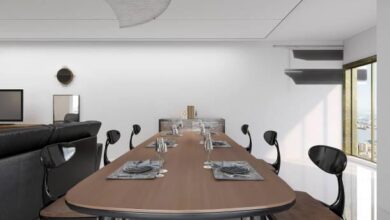Beyond the Walls: Redesigning Cubicle Offices for Employee Well-being

In the evolution of workplace design, the cubicle office layout has been both celebrated and criticized. Its inception was hailed as a groundbreaking shift from open floor plans to provide employees with a semblance of privacy and personal space. However, as the years progressed, cubicles became synonymous with isolation, monotony, and a lack of inspiration, ultimately affecting employee well-being. In response to this, a movement has emerged in office design—reimagining the cubicle to prioritize employee well-being, fostering a more positive and productive work environment.
The traditional cubicle office layout emerged in the 1960s as a solution to the open office concept, aiming to grant workers a space that offered privacy and minimized distractions. Yet, it also inadvertently created an environment that led to a sense of isolation and disconnection. Employees often found themselves enclosed in dull, uniform spaces, lacking natural light and personalization—factors that significantly impact mental health and overall productivity.
Recognizing the need for change, contemporary workplace design focuses on creating office spaces that support employee well-being. This approach involves breaking down the barriers of traditional cubicles by integrating elements that encourage collaboration, creativity, and overall health.
One pivotal aspect of this redesign is the incorporation of biophilic design principles. This concept emphasizes connecting employees with nature by integrating natural elements into the workspace. Incorporating natural light, indoor plants, and natural materials not only enhances the aesthetics but also has a positive impact on mental health, reducing stress and boosting productivity. Studies have shown that exposure to natural elements in the workplace can lead to improved focus, creativity, and overall well-being.
Moreover, the restructuring of office table design spaces involve an emphasis on flexibility and customization. Providing employees with the ability to personalize their workspace can significantly impact their engagement and satisfaction. Adjustable desks, varied seating options, and ergonomic furniture are fundamental in ensuring physical comfort and reducing the health risks associated with a sedentary work style. Empowering employees to adapt their environment to suit their preferences fosters a sense of ownership, ultimately boosting morale and productivity.
Another crucial element in this redesign is the integration of communal spaces within the office. Breakout areas, shared collaborative zones, and comfortable lounges encourage social interaction and teamwork. By breaking the monotony of cubicle office, these spaces serve as hubs for spontaneous discussions, idea exchange, and relaxation, fostering a more dynamic and connected work culture.
Furthermore, the technological landscape has also played a significant role in reshaping cubicle offices for employee well-being. Remote work and digital connectivity have become more prevalent, allowing for a hybrid model that combines the comfort of working from home with the benefits of an office setting. This transition has prompted a reconsideration of the traditional cubicle office layout, promoting a more fluid and adaptable environment that accommodates both in-person and remote work seamlessly.
Employers and office designers now understand that prioritizing employee well-being not only boosts morale but also leads to increased productivity and reduced turnover rates. As such, the shift in office design is seen as an investment in the company’s most valuable asset—its people.
While the redesign of cubicle office furniture philippines for employee well-being is a promising development, it’s essential to note that this transition is an ongoing process. Implementing these changes requires a holistic approach, involving collaboration between employers, designers, and employees to create a workspace that caters to the diverse needs and preferences of individuals.
In conclusion, the overhaul of traditional cubicle offices represents a pivotal shift towards prioritizing employee well-being in the workplace. By embracing biophilic design, encouraging flexibility, fostering communal spaces, and adapting to the evolving technological landscape, companies can create environments that not only enhance employee satisfaction but also drive innovation and productivity. Redesigning cubicle offices is not just about physical space—it’s a fundamental transformation that redefines the relationship between workspaces and employee well-being.


